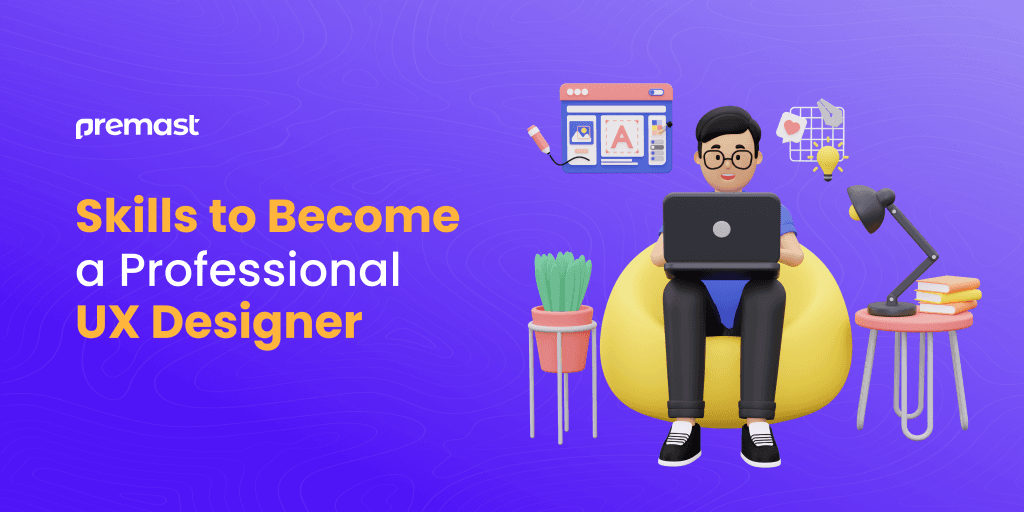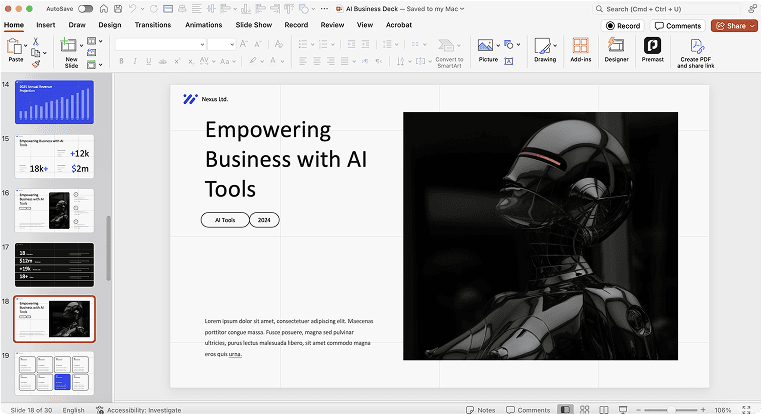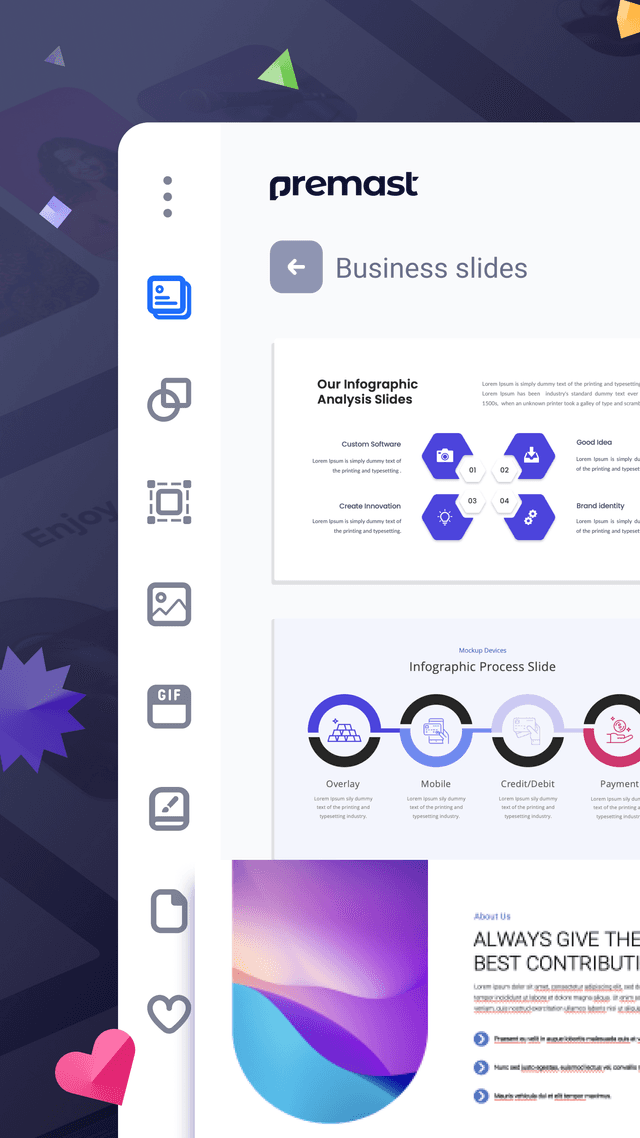
Skills to Become a Professional UX Designer
Becoming a better UX designer is increasingly important in today’s digital business world. This is mainly because businesses now understand the importance of UX design and how having UX design teams can make a big difference in their profits and overall success. While we consider this role, it centers on the interaction between actual individuals and everyday goods and services.
Recognizing the strong demand for UX design, there’s a need for a greater emphasis on incorporating discipline along with a deep understanding of psychology and thorough market analysis In essence, our primary goal is to meet our users’ requirements by delivering enjoyable interactions and maintaining their allegiance to our company’s brand. Furthermore, enhancing the user experience meaningfully will significantly enhance the customer’s path to success for our business.
Becoming a UX designer may seem appealing, but it’s ironically more of a trendy label for almost everyone. Start by recognizing these five essential skill sets to get started with the basics:
Fundamentals of Graphic Design.
graphic design plays a crucial role in the digital business landscape, it’s essential to begin our journey from the fundamentals. Certainly, an initial competence in visual languages is a prerequisite for a UX designer. We can gradually build our proficiency in this area by grasping these key concepts:
-Visual Communication.
Visual communication serves as the foremost tool for a UX designer in strategizing information layouts and bringing design elements to life. Additionally, it fosters user-friendly product navigation to attract and retain potential users.
Numerous individuals in the population prefer visual learning and are influenced more by visual signals than auditory ones. Developing strong visual communication skills, such as creating elements that appear interactive, creating a clear visual hierarchy, leveraging typography and color theory effectively, and reducing the reliance on written instructions, is crucial for UX designers.
-Size and Scale.
To effectively capture the user’s attention in a specific area, it’s essential to gain knowledge about sizing and scaling. However, caution is necessary during this process to prevent errors that might diminish the significance of on-screen elements. Consider enlarging the elements’ proportions to enhance their visibility.
-Point of View.
UX designers consistently manipulate perspective to craft optical illusions, emphasizing a key element within the space. If we delve into intricate details without incorporating adequate depth, shadows, and effects, our design might appear unrefined and challenging to visualize. To gain a more profound understanding of perspective and depth, consider seeking guidance from professionals or exploring tutorials on platforms like YouTube.
–Motion Design.
Animation infuses viewers with vitality and enthusiasm, and we can use motion to captivate their attention. Avoid incorporating an excessive amount of dynamic elements, as it may lead to user confusion. Create a refined motion design that is both elegant and straightforward for users to comprehend.
-Spacing.
Certainly, when discussing UX design, we’ll consider minimalist ideas. However, it’s important to exercise caution when filling the space with various elements. Incorporating whitespace is just as vital as making thoughtful component selections.
-Patterns.
Creating our content by the Z and F patterns can enhance the user experience. The Z pattern is most effective for content with a lighter feel, similar to how Apple’s website is designed.
This approach involves guiding the user’s attention from the top left to the top right of the screen. Conversely, the F pattern is better suited for text-intensive pages like blog posts. It facilitates users in quickly scanning through images and headlines.
–Color and Contrast.
Picking the right colors and making them pop in a design is similar to adjusting the size and weight of elements. If you use colors that stand out a lot, they get noticed by users. For example, bright colors look closer on a dark background and farther on a light one. Remember, using one bright color can catch users’ eyes, even if your design has many elements. Bright colors are more exciting for users than dull ones.
–Typography.
The appropriate combination of fonts can convey our website’s character in specific sections. Employing various font sizes and weights can enhance the organization of text elements, requiring a UX designer to be well-versed in header sizes for effective design execution.
Begin with H1 for the primary headline of a page, followed by H2 and H3 for more specific concepts. Additionally, experimenting with distinct font weights is a valuable approach. For instance, pairing larger fonts with lighter weights and smaller fonts with heavier weights can create further visual contrast.
–Storytelling.
As a UX designer, it is essential to incorporate storytelling into the design process to ensure a user-friendly product, as storytelling has a timeless appeal for engaging audiences. Storytelling in UX design isn’t limited to lengthy text; instead, it can be effectively conveyed through visual elements like images, videos, and graphics, among other media. To craft compelling narratives, thorough research is necessary to understand and create user personas, gaining insights into the target audience.
To attain a positive outcome, we can implement these two essential things:
- Be able to explain the “purpose”.
Incorporating storytelling into our design necessitates having a clear vision. This way, we can steer clear of mediocrity and instead emphasize the brand’s underlying mission. This approach ensures that we have a well-defined starting point and destination in mind. When we adopt this strategy, numerous avenues open up to effectively convey our product’s essence to our audience.
- Promote our projects on Medium and Behance.
After completing the labor-intensive task of shaping our design narrative, consider initiating our project on a social platform to reap the benefits. Subsequently, we can leverage Medium or Behance as sources of validation to garner increased engagement and endorsements. Furthermore, we can disseminate our work to bolster our campaign and raise awareness within the social sphere.
–Research and Analysis.
User research and analysis play a crucial role in helping UX designers make informed design choices and incorporate customer feedback.
Throughout this journey, we can initiate activities such as conducting user interviews, making observations, and running tests. However, many of us may find ourselves inundated with a wealth of information and unsure about how to proceed.
To address this challenge, we can focus on these two key strategies for improvement.
-Reading.
To acquire a deeper understanding of design principles, it’s beneficial to regularly engage with a variety of resources such as articles, design updates, or UX design newsletters. By incorporating this into our daily routine, we can gain valuable insights. There exists a wealth of enlightening articles on design trends, allowing us to expand our creative horizons, particularly during moments of creative block or low productivity.
-Analyze the Existing Works.
Designers must incorporate an assessment procedure when choosing concepts or approaches for creative projects. This entails evaluating our approach by soliciting input from colleagues or experts and providing feedback. Furthermore, it is crucial to scrutinize our work to confirm that our design concepts are well-suited to achieve our company’s objectives.
–Prototyping Skills.
Prototyping has rapidly emerged as the most effective approach for UX designers in this current decade. The prototype plays a vital role in crafting user experiences and interfaces, enabling us to present our designs interactively. As a result, our potential users can engage with our product by clicking on it.
–Using Figma.
We can utilize Figma for end-to-end design and prototyping, enhancing the entire creative process. Figma benefits from a strong network of designers and developers who offer various plugins to enhance functionality and streamline our work processes. Additionally, we have the opportunity to actively participate and exchange our ideas within this community.
–Responsiveness.
When it comes to UX design, it’s essential to understand the significance of website responsiveness for our business product. Responsive web design ensures that our website’s content and layout are adaptable to various screen sizes. To illustrate, it’s crucial to position call-to-action elements correctly. Enhancing website responsiveness not only enhances the user experience but also fosters a favorable impression of our business and brand.
-Social Abilities.
In addition to acquiring essential design expertise, UX designers need to enhance their social abilities, such as collaboration and communication. Whether employed by a small or large organization, there’s a significant opportunity for them to engage with other companies or become part of various communities.
At the End, If you’re looking to advance your career in UX design, the best course of action at the moment is to delve into the fundamentals of UX design. We should focus on acquiring the essential skills, enhancing our interpersonal abilities, and refining our roles in this field.
Let’s visit Premast to download free PowerPoint templates. You can also visit Premast Blog to keep up-to-date with new templates and get design tips from our PowerPoint experts!
Spread the word
Start for free.
Design, manage and share your Presentation and branded content







